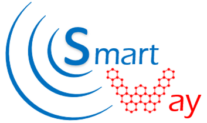HETEROGENEOUS MATERIAL AND TECHNOLOGICAL PLATFORM FOR A NEW DOMAIN OF POWER NANOELECTRONICS
The SMARTWAY consortium is made up from 5 partners from 4 European countries (France, Germany, Belgium, Romania) with a wide enough geographical spread. The partners are:
- 1 major industrial global players: Thales Research & Technology (France)
- 3 SMEs: TAIPRO Engineering SA (Belgium), indie Semiconductor (Germany) and Innovations for High Performance Microelectronics (Germany)
- 1 academic institutions National Institute for Research and Development in Micro Technologies (Romania):


The Smartway project is funded by HORIZON-EIC-2022-TRANSITION-01 under the grant agreement 101103057
About Smartway
To tackle the problems arisen from the fact that “current digital technologies are gradually reaching the limits of performance and miniaturization while consuming higher and higher amounts of energy”, SMARTWAY proposes novel architectures based on new paradigms that exhibit a significant decrease in energy consumption while improving on speed/performance and miniaturization. The disruptive nature of the targeted approach relies on a progress towards the wafer-scale integration of 2D materials, MMs, and CNTs into radar sensor suitable for IoT sensing applications at both millimeter-waves (i.e., 24–60GHz) and THz frequencies (i.e., 240–300GHz).
